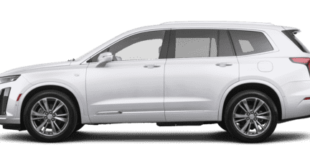Automakers do a great job of telling us what we need. The worst example is that we “need” all-wheel drive. All of us. The truth is, most of us don’t, but automakers have convinced people that sending power to both axles is what magically makes a car competent in the snow (hint: it isn’t).
Enter the Toyota Camry, a vehicle that certainly doesn’t need an all-wheel-drive system, but adds one for the 2020 model year nonetheless. And the all-wheel-drive Camry is fine. It’s competent on snowy stuff, able to accelerate with minimal slippage, negotiate turns effortlessly, and, if you turn off the nannies, can rip a pretty awesome four-wheel drift. The fatal flaw in this package has nothing to do with its mechanical capability – it’s that Toyota forces customers into a buzzy four-cylinder engine and demands $ 1,500 for the relatively simple AWD system.
Slide Into AWD
Neither of those things will matter to consumers, of course. There’s absolutely a market for all-wheel-drive sedans, as evidenced by the long-serving Subaru Legacy, the recently discontinued Ford Fusion, and the newer Nissan Altima. Toyota expects the new setup to represent close to 15 percent of Camry sales (the larger Avalon AWD will add up to 20 percent of that car’s overall sales).
Toyota calls the Camry’s all-wheel-drive system Dynamic Torque Control AWD, a setup this sedan shares with the larger Avalon AWD and the gas-only RAV4 crossover. It’s a familiar system, with a transfer case on the front axle, a driveshaft that runs to the rear axle, and a coupler that sits just ahead of the open rear differential. When the Camry’s computers detect slip on the front wheels, the coupler hooks up to the free-spinning driveshaft, resulting in up to 50 percent of the engine’s torque arriving at the back of the car. Toyota says the system provides the benefit of all-wheel drive without sacrificing fuel economy.



I couldn’t assess the fuel economy during our brief test outside of Park City, Utah, but at the very least, the twisting roads and dedicated snow driving course served as a good proving ground for the AWD. The Camry handled adeptly on the short “snowcross,” with the all-wheel-drive system stepping in as needed with minimal delay. Punch the throttle coming out of a corner, and the Camry zipped forward with little drama. Do the same with the traction and stability control off and there’s considerably more drama.
The Camry is anything but a handful when driven exuberantly, though, even with my tester’s P235/40/19 all-season tires. Steer into the drift, keep steady throttle, and enjoy the relatively communicative feedback through the chassis as the weight transfers. The Camry will engage in some shenanigans if you prod it hard enough, and is a good amount of fun while doing so.
It’s harder to assess the system’s value on dry roads, which is all the brilliantly sunny Utah day provided when we left the dedicated snow track. On some tighter, more aggressive turns, the Camry feels a little less prone to understeer, as it sends power to the rear wheels when needed. Admittedly, though, it’s far more difficult to feel the AWD in action on dry pavement compared to the Camry in the snow.
Save Thousands On A New Toyota Camry

MSRP $ 25,050
MSRP $ 25,050
Save on average over $ 3,400 off MSRP* with
Motor1.com Car Buying Service
The Four-Pot Problem
Toyota will offer the Camry AWD across four trims (LE, SE, XSE, XLE) but with only a single engine. Yes, like the Nissan Altima, the Camry AWD relies solely on its base engine, a 2.5-liter four-cylinder that produces a modest 205 horsepower and 185 pound-feet of torque in XSE guise (LE, SE, and XLE are down three points in each metric).
The so-called Dynamic Force engine is neither dynamic nor forceful when asked to move 3,575 pounds of midsize sedan on roads a mile and a half above sea level. The oxygen-deprived engine is buzzy and unenjoyable at this altitude and pushing it up five- or six-percent grades feels Sisyphean in its cruelty. To its credit, the Camry soldiers on, with the eight-speed automatic doing its best to keep the tortured four-cylinder engine in the meatiest part of the lean rev range. On the snow driving course, meanwhile, the four-cylinder engine lacks the low-end torque to get the car out of sorts – you’ll need a heavy foot to engage in the aforementioned shenanigans.
At this point, you might be wondering why Toyota didn’t opt for a V6 in this particular Camry. The party line is that the engineers built a four-cylinder, all-wheel-drive mule and found the pairing quite good. That was that, money was spent, equipment allocated, and drinks had. Personally, I believe the V6 Camry’s low take rate – just six percent of buyers go for the 300-plus-hp Camry! – married with what would almost certainly be a far higher price is the real reason Toyota opted for the four-cylinder. And in this car’s defense, it may be a fine companion at more reasonable altitudes (we’re eager to find out). If you’re living this high life, though, perhaps consider the turbocharged Subaru Legacy instead.




The Better Alternative
Or, better yet, don’t get a midsize sedan with all-wheel drive. Instead, get a front-wheel-drive sedan and buy a set of snow tires. Like all-wheel drive, snow tires provide better traction while accelerating from a standstill. But dedicated winter rubber also improves a car’s braking substantially and provides more confidence while cornering in cold conditions. Those positives far outweigh the minor inconvenience of swapping rubber twice a year.
It’s a tough argument in the case of the Camry XSE tester I drove, which wore a set of handsome 19-inch wheels, though. According to Tire Rack, you’d be spending anywhere from $ 725 to just south of $ 1,300 for winter tires. Go with a more reasonable wheel size, though, and that figure will fall. Plan on $ 550 to $ 800 for winter tires that will fit the 18-inch wheels on the popular SE and XLE models and even less for the LE’s 17s. No matter how you slice it, those prices are less than the $ 1,500 premium Toyota is asking for all-wheel drive, even with two annual mountings thrown in, all while providing better performance in the wet and cold and giving customers their choice of engines.

